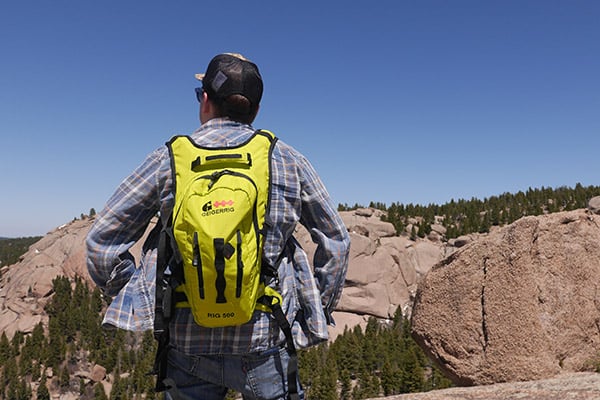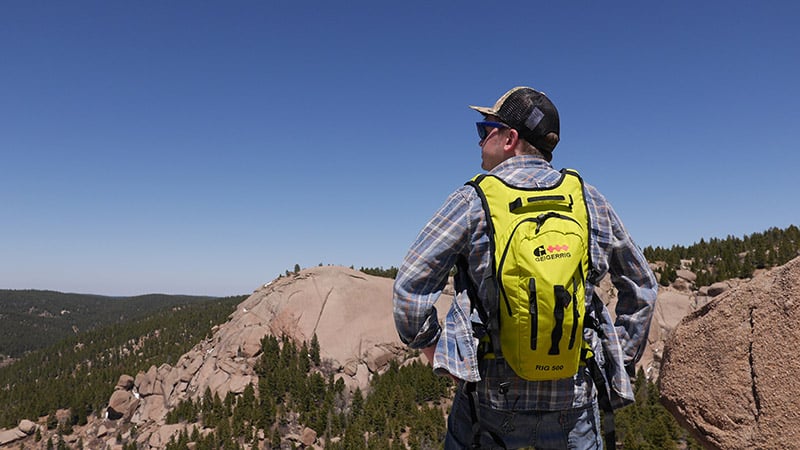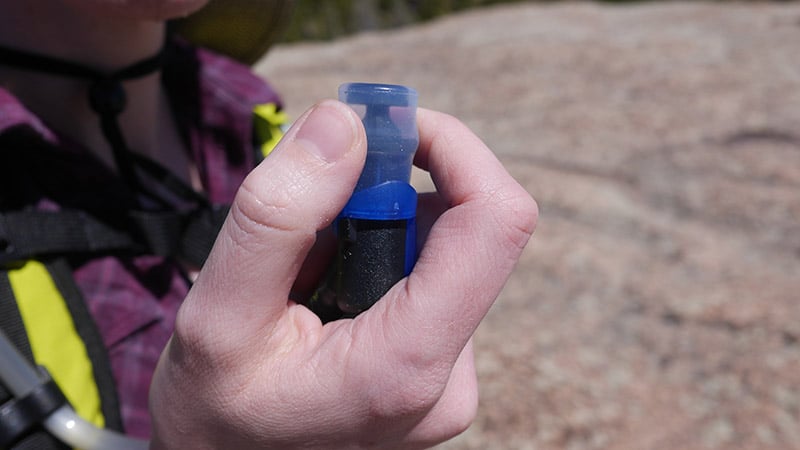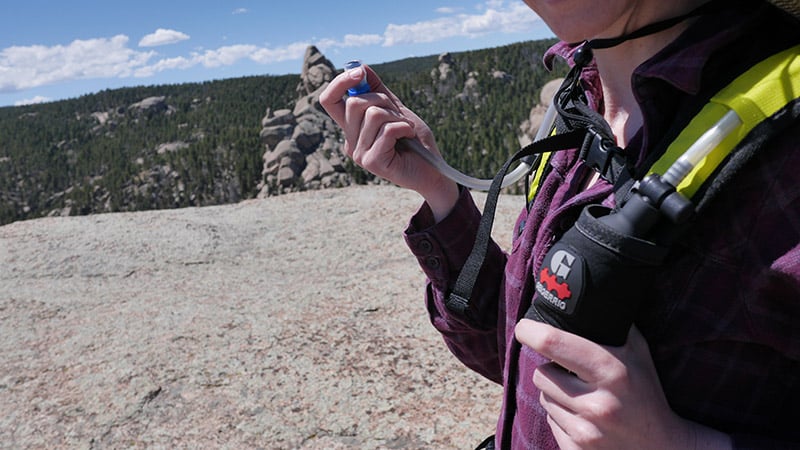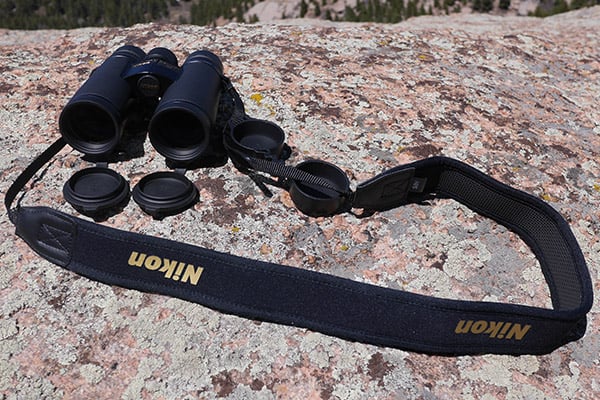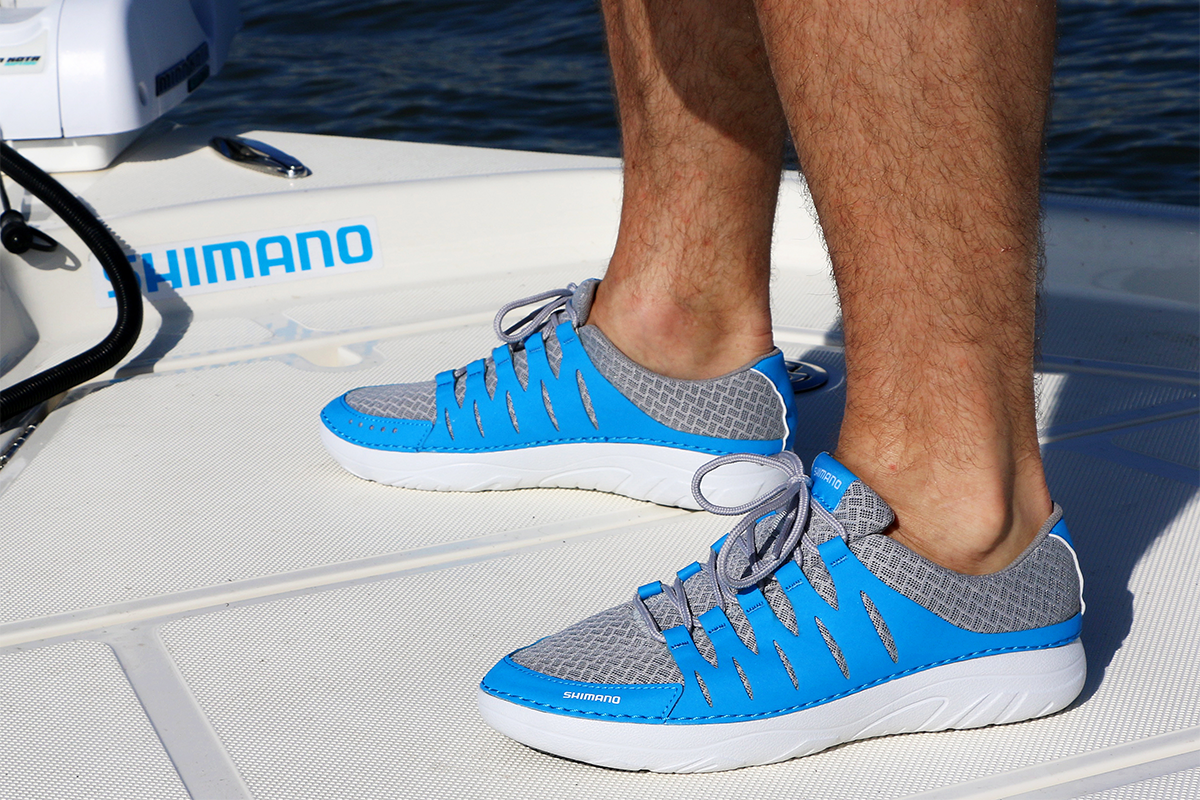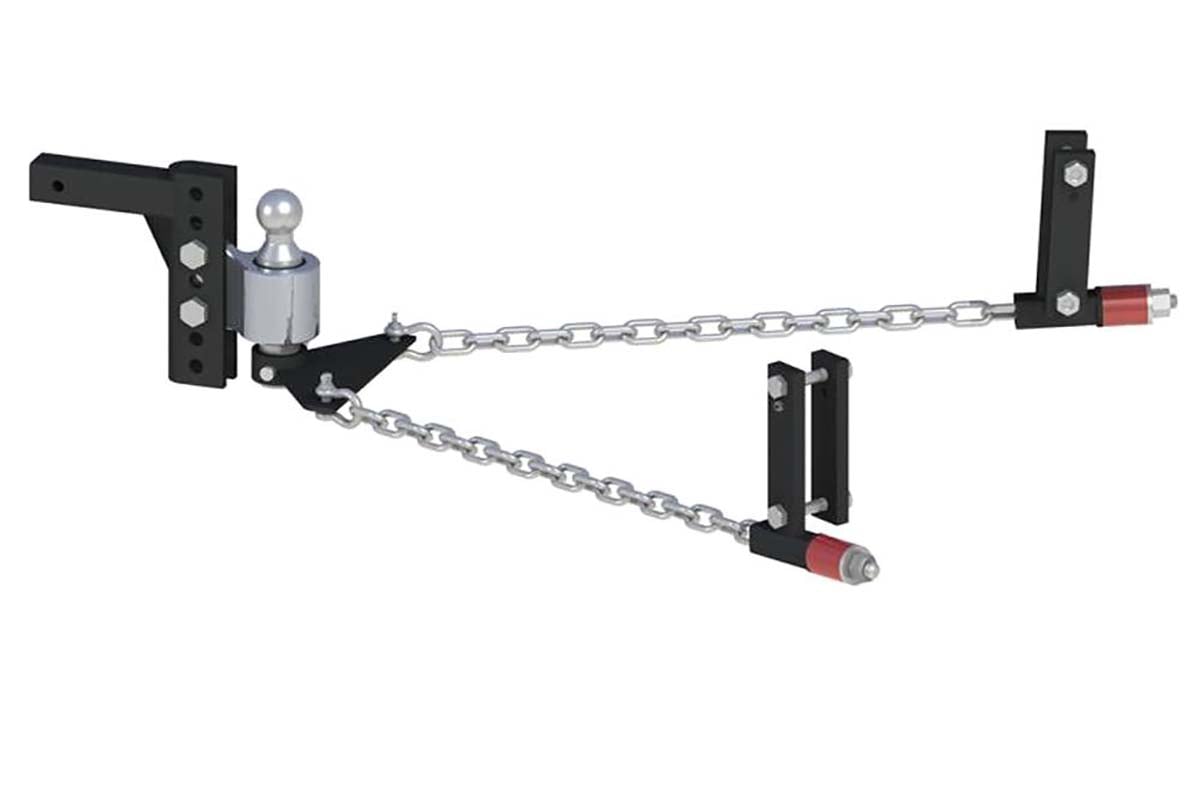Last Updated on
By David Link
Geigerrig’s unique pressurized hydration bladder design is truly worth adding to your gear collection.
The hydration pack concept is nothing new, and most popular backpack brands offer some iteration of a hydration pouch or bladder in select models. The idea is fairly simple, and most are familiar with it. A pouch is placed inside the pack with a tube leading outside for the user to drink from. The hydration reservoir is a substitute for packing water bottles, and it allows the user to hydrate without taking off their pack. It’s a simple design that has enjoyed success in the outdoor market for years. However, there hasn’t been much innovation around the concept. Most models are just pouches of water that require the user to suck on the tube to retrieve water. That is until Geigerrig unveiled their innovative hydration engine design.
Geigerrig packs are pressurized, and this addition is a real game changer in the hydration pack design. No more sucking on tubes to retrieve water. Drinking from a Geigerrig pack is actually enjoyable rather than an unpleasant chore. If you spend any extended period of time in the outdoors, then you really need to try one of their packs. They come in a variety of sizes in both outdoor and tactical styles, and you can get the bladders in either 2L or 3L sizes (with optional 1.5L replacement packs).
Today I’m going to look at one of their lightweight models, the Geigerrig RIG 500 Hydration Pack. I’ve had a chance to spend several outings with this pack, and it really has a lot of benefits to offer that you just can’t get in ordinary hydration packs.
Basics
The Geigerrig Hydration Engine is a patented design consisting of a water bladder, a drinking tube with a nozzle, and a “power bulb” with a tube used to pressurize the device. Each Geigerrig water bladder is removable, and it has quick-release valves to attach and remove the drinking and power bulb tubes to the bladder. The ability to remove the bladder is huge. It makes filling the bladder a snap, but just as important, it makes cleaning the bladder easy. You can detach it from the tubes and even place it in the dishwasher!
The bladder opens at the top, and it is sealed with an easy sliding plastic piece that keeps it tight and secure in the pack. The bladder almost functions like a dry bag for those that have used them. Once the water bladder is filled (easily indicated by a fill-line), you simply flip a tab down on the bladder and slide the attached plastic piece over the top to secure it. Next you re-attach both the drinking tube and the power bulb tube to their respective valves, and you’re ready to go.
The power bulb (located on the left shoulder in this case) can be pumped up to 20 times to create pressure within the reservoir. Once the pressure is built up, you turn the drinking nozzle to the “on” position, and squeeze the plastic mouthpiece. Out comes pressurized water that you can use in a variety of ways. Aside from drinking the water, you can use it to wash your face / cool off, spray water for other companions including dogs, or clean off items in a pinch. As you use the pack, the pressurization will lower, but you can pump the power bulb a couple times again to bring it back up. Once the reservoir is depleted, the power bulb has a pressure release valve that you can use to reset the reservoir, detach it and fill it again. You can also fill the reservoir just by opening it in the pack and pouring water into it.
Geigerrig RIG 500 Specs
- Fluid Capacity: 70 oz (2 Liters).
- Dry Capacity (Pack Storage): 500 cu in. (11.47 Liters).
- Pack Straps: Padded mesh straps with adjustable chest and waist strap.
- Power Bulb: Left side of the shoulder.
- Drinking Tube with Nozzle: Right side of the shoulder.
- Pockets: Once large internal pouch (shares space with the hydration engine) and two small zip cargo pockets in the front.
- Optional Water Filtration Add-On: Filters sold separately.
Care Tips
Upon opening a Geigerrig pack, it’s important to take your time to get to know the system. Failures have happened when users connect the wrong tube to the wrong valve. It all makes perfect sense once you use it, but even I had an “ape moment” where I was scratching my head and looking at the inner workings of the hydration engine. Just don’t make any hard tugs or pulls or pump the power bulb an excessive amount and you’ll be fine. The same goes with opening the reservoir for the first time. It sticks a bit out of the factory, but just be gentle and it’ll open fine. Read the instructions on the reservoir to make sure you’re inserting the right tube into the right valve. The hydration engine is pretty rugged, but should you truly mess up, Geigerrig sells replacement parts for the power bulb and spare reservoirs.
In The Field
I tested the Geigerrig RIG 500 in several mountain hikes at altitudes between 7,000 and 9,000 ft. This pack is meant to be their lightweight model, and it certainly succeeds in feeling streamlined and easy to wear. The color is appealing too. You wouldn’t want to wear it on a hunt of course, but as far as outdoor recreation goes, it’s an appropriate color. You want bright, neon colors for hikes since it makes you easier to spot should you get lost or injured. There isn’t a ton of storage space, but that’s to be expected with this model. There are two clever zip up cargo pockets on the front to hold smaller gear, and one larger cargo area shares space with the hydration reservoir. I could see this being a great trail running bag, but since I’m more of a hiker, I tested it with those purposes in mind. A nice extra note, I never felt like the higher altitude impacted the function of the pack at all.
As for the hydration engine, it really is a joy to use in the field. Drinking water from the nozzle is a breeze, and you don’t have to place too much pressure on the nozzle to get a flow going. The spout does go a long way when the engine is fully pressurized; it’s not just a gimmick. It does take a little getting used to, but when compared to sucking through a tube to retrieve water, it’s night and day. It only took an hour or so for me to think: “Why would anyone use a hydration pack that’s not pressurized?”
This pack is a bit small for longer solo hikes, and I would probably buy a larger one for those purposes. However, since I was hiking with a partner, she wore the Geigerrig and I wore a heavier pack with gear and a water bottle for my needs. So this Geigerrig has a place in my hiking adventures even when I don’t wear it.
A couple expectation notes, the exposed section of the drinking tube does warm up in the sun. This means your first drink may be a little warm, but a colder second drink from the reservoir in the pack always follows it. I never felt like this is an issue. I’m also a little paranoid about over-pumping the power bulb, but as long as you pay attention it shouldn’t be an issue. All in all there are few drawbacks.
Final Thoughts
I’ve used several hydration packs over the years, but I’ve never really found one I liked. Some just seemed tedious and almost gross to use, or others just tasted sort of foul when I drank water out of them. Personally I had given up the hydration packs and resolved to just carry insulated water bottles. But then I tested the Geigerrig RIG 500, and I finally found a design I liked. The water tastes clean, and the easy cleaning ability will ensure it tastes just as fresh for years to come. Hiking with dogs becomes an easier task with a Geigerrig in the mix as well, although it would necessitate bringing more water or buying a larger reservoir. I could honestly see myself buying a second hydration reservoir to pack and then switch them out on longer hikes. I have yet to try the additional water filter features of the RIG 500, but I look forward to testing that later this year in mountain streams.
Do yourself a favor, if you’re interested in a hydration pack, try a Geigerrig before you try anything else. I bet you’ll be hooked on the design and end up with more than one in your gear kit.
